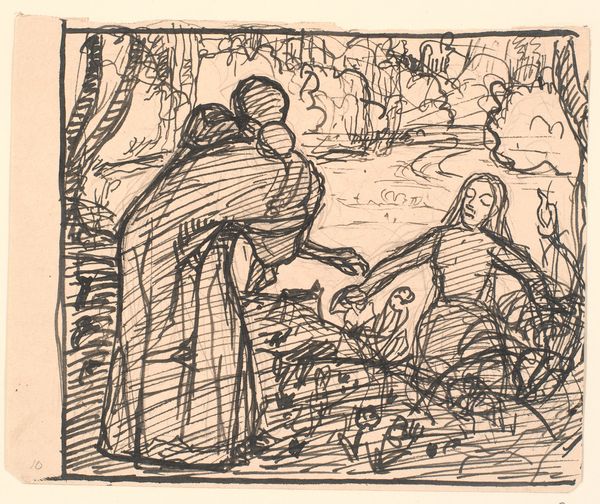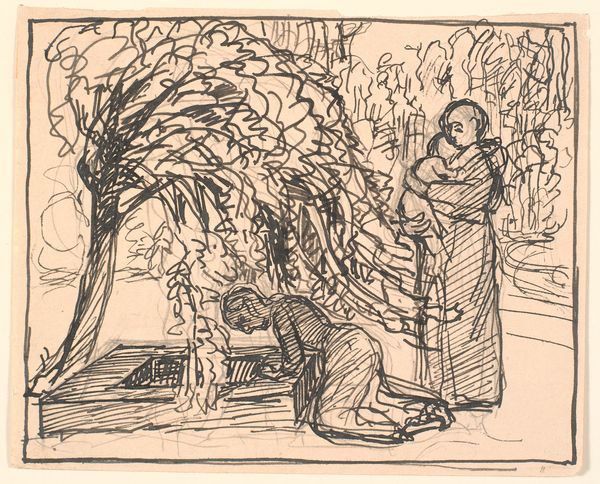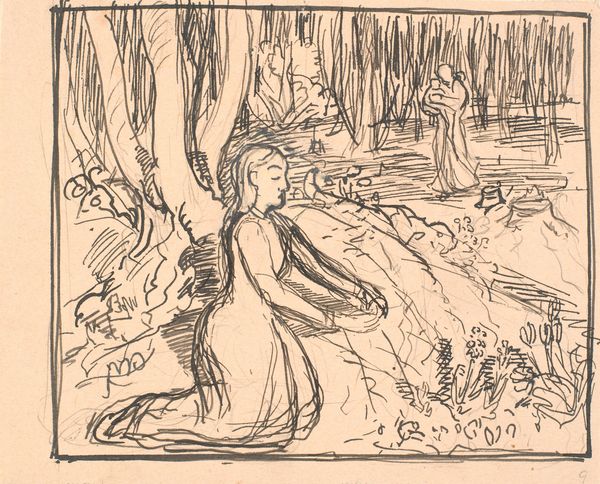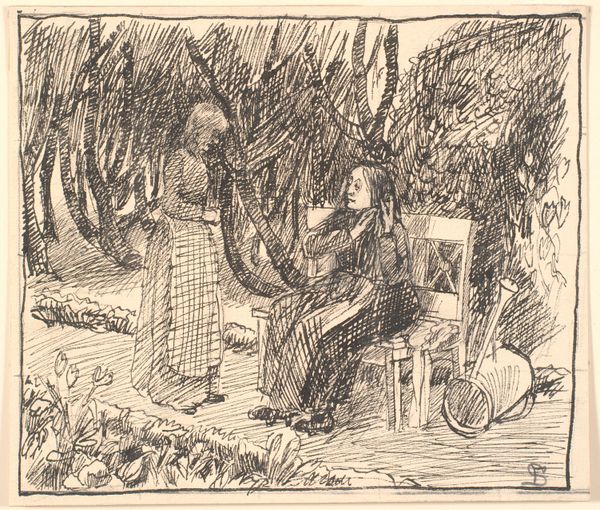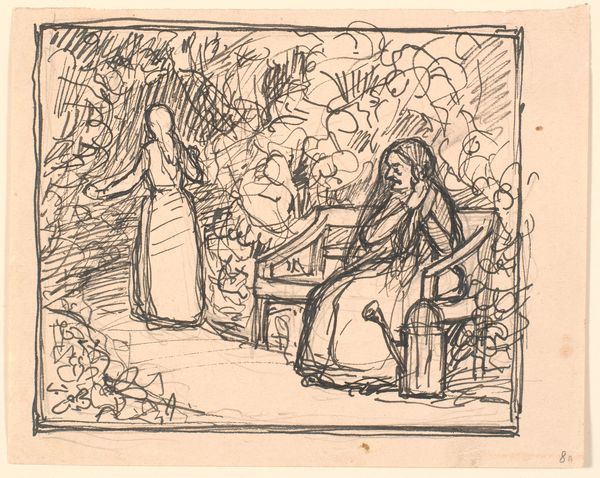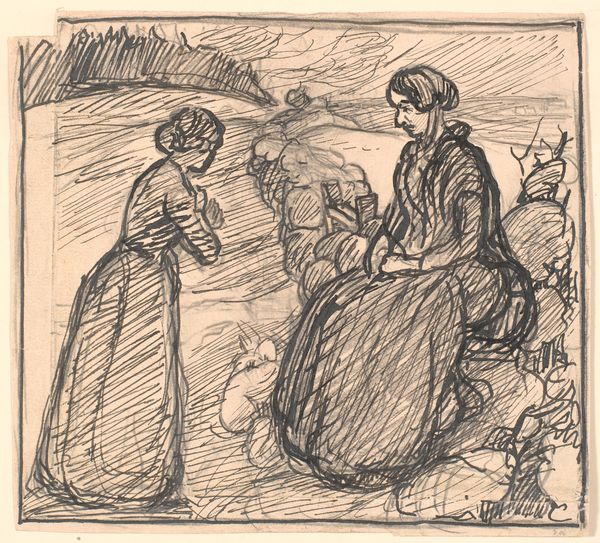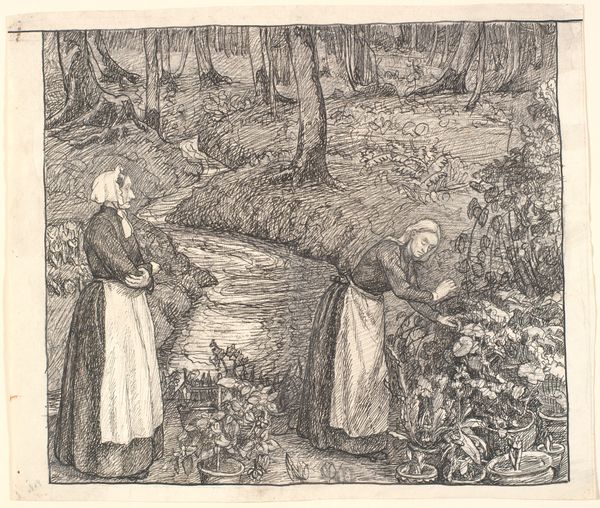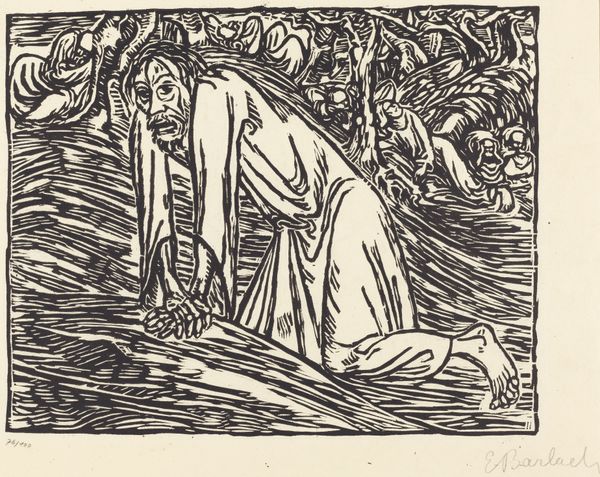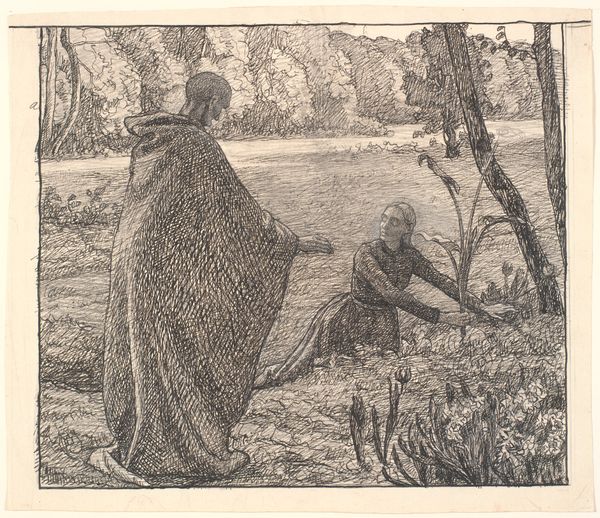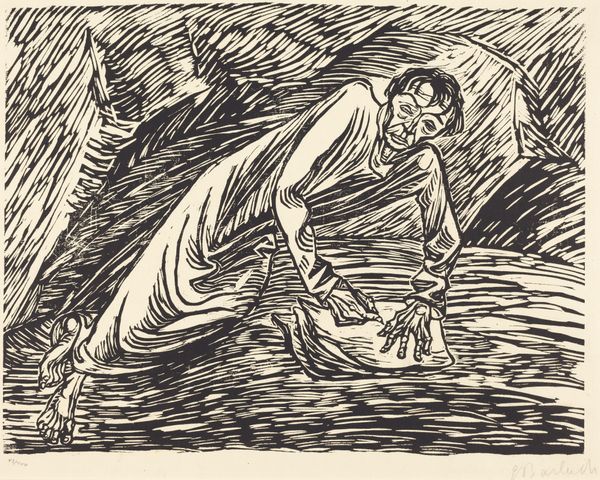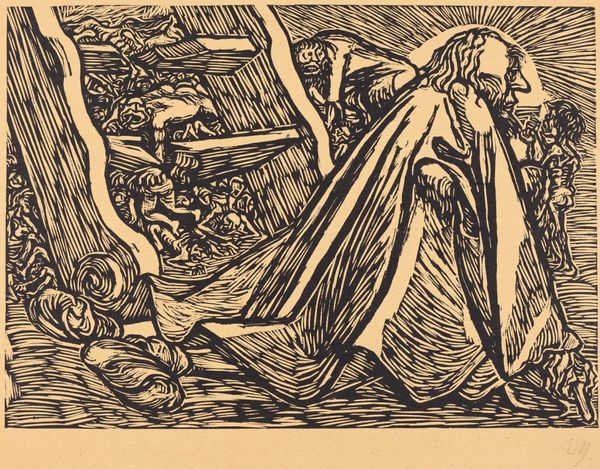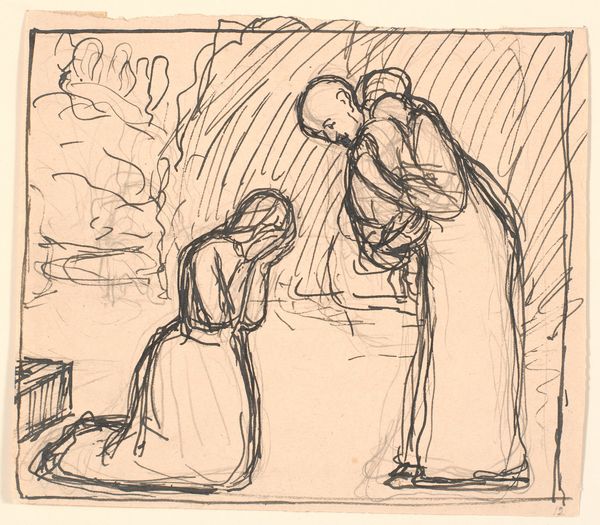
drawing, ink, pen
#
drawing
#
comic strip sketch
#
narrative-art
#
pen illustration
#
pen sketch
#
personal sketchbook
#
ink
#
ink drawing experimentation
#
pen-ink sketch
#
pen work
#
symbolism
#
sketchbook drawing
#
pen
#
storyboard and sketchbook work
#
sketchbook art
Dimensions: 156 mm (height) x 194 mm (width) (bladmaal)
Curator: Fritz Syberg's "Og så gik de ind i Dødens store Drivhus..."—"And Then They Entered the Great Greenhouse of Death..."—created in 1901, offers a fascinating glimpse into the artist's symbolic world, using ink and pen on paper. What’s your immediate reaction to this pen illustration? Editor: Well, first off, I find the composition unsettling. The stark, almost frantic linework, creates a palpable sense of unease. It reminds me of old, lurid fairy tales, where nature itself is a trap. Curator: Precisely. Syberg's handling of the pen is quite remarkable. Notice the varying line weights—the thick, dark outlines defining the figures against the more delicate, scratchy textures that bring forth the surrounding "greenhouse." I find it striking how such simple means convey volume and create a compelling, if rather bleak, atmosphere. It is worth considering Syberg's social milieu, too, the artistic circles around Funen. Editor: Yes, and I'm drawn to the symbolism of the "greenhouse." It feels like a corrupted Eden. The snakes writhing around the figures—they’re the most obvious symbolic markers here, hinting at temptation, deceit, and a loss of innocence. But there is an additional aspect regarding "mother and son" motif. Curator: You are right. And observe the figures, the composition suggests a narrative; that's hard to read, but it has that allegorical sensibility. How do you think Syberg used imagery to convey particular emotions or ideas. Editor: To me, the greenhouse represents a place where death thrives, concealed beneath a veneer of growth and beauty. The snakes, of course, symbolize danger and perhaps the insidious nature of mortality itself, coiled up in something deceptively inviting. Curator: Interesting idea to associate "mortality itself," with snakes. But what are the roots of that relation? It goes back to Adam and Eve. A timeless symbol indeed. In essence, I feel that it is the symbolic space constructed with simple drawing tools and his mastery that make his artwork stand the test of time. Editor: Absolutely. And seeing how the symbols tie into older myths really opens up this piece. It makes the artist's world much richer and the scene more potent and alive in my memory.
Comments
No comments
Be the first to comment and join the conversation on the ultimate creative platform.
